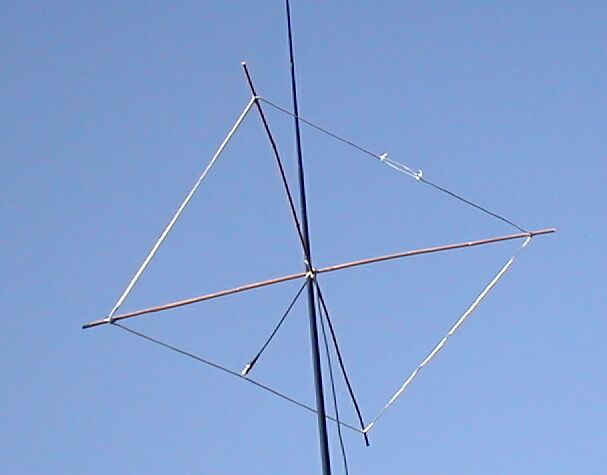
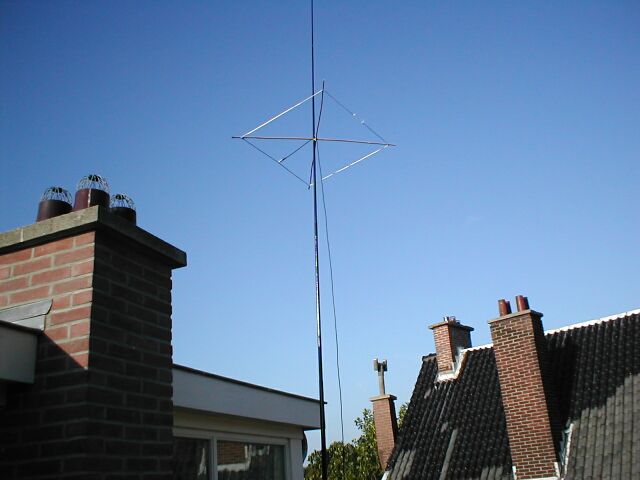
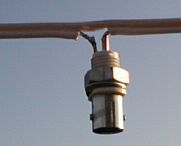
Feeding the aerial using 50Ohms coaxial cable. One of the two leads of the aerial is cut open, the other remains as is (if you are working carefully enough).
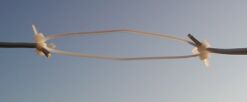
Cable ties to close the loop mechanically, leaving the possibility to apply a little more tension at the very final stage.

For the short-circuit bridges just scratch of the insulation, do not hurt the leads below. I used a little bit of solid copper conductor to join both wires electrically (one twist and a little bit of solder will do too).
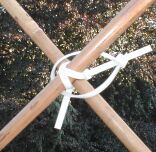
Cable ties again... Here they are forming the all so important cross structure, together with some bamboo poles.
The feeding RG58 and the fibre-glass mast will go through the large looped cable tie.

Next to cable ties and luster terminals I really do like to use duck tape. This way the edges easily attach to the bamboo poles of the supporting cross.